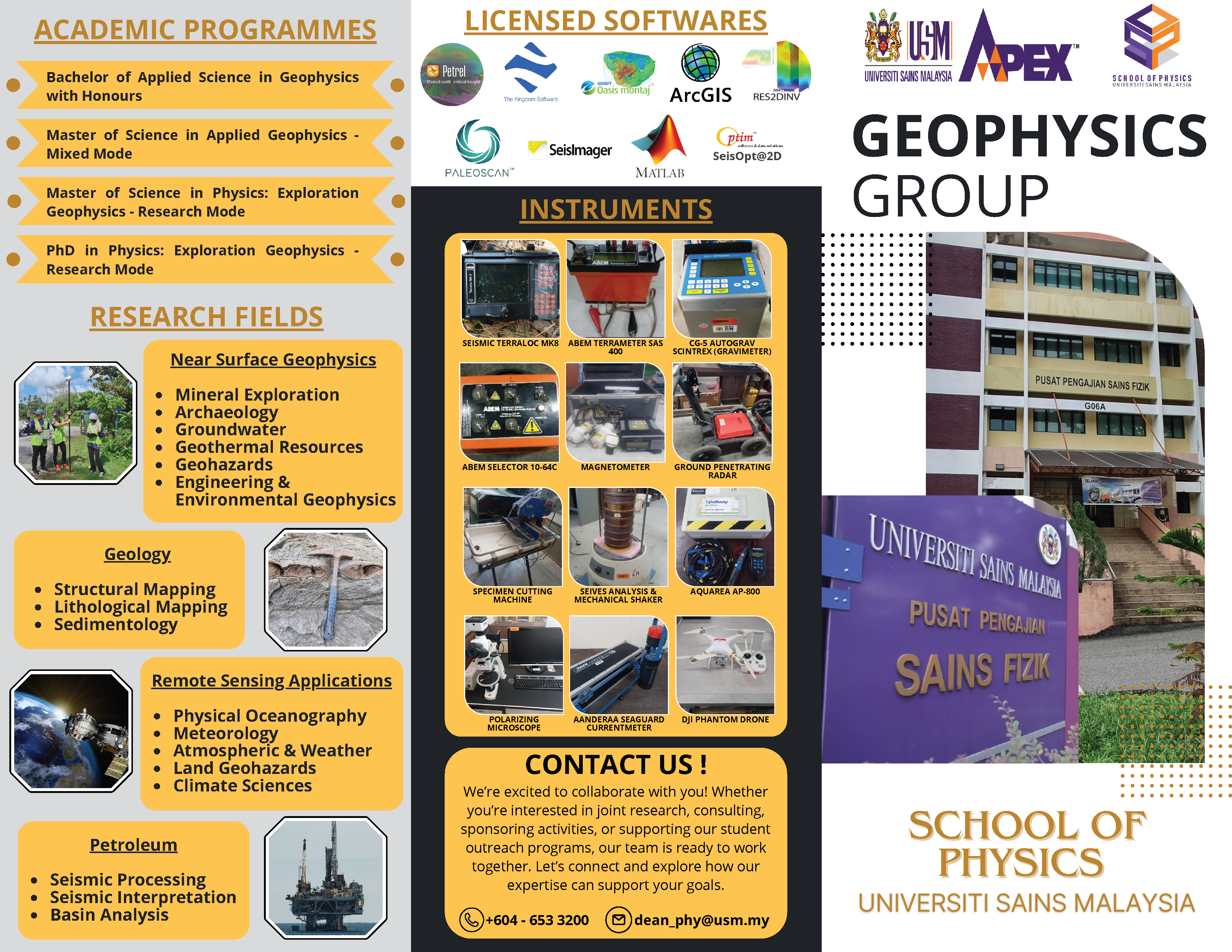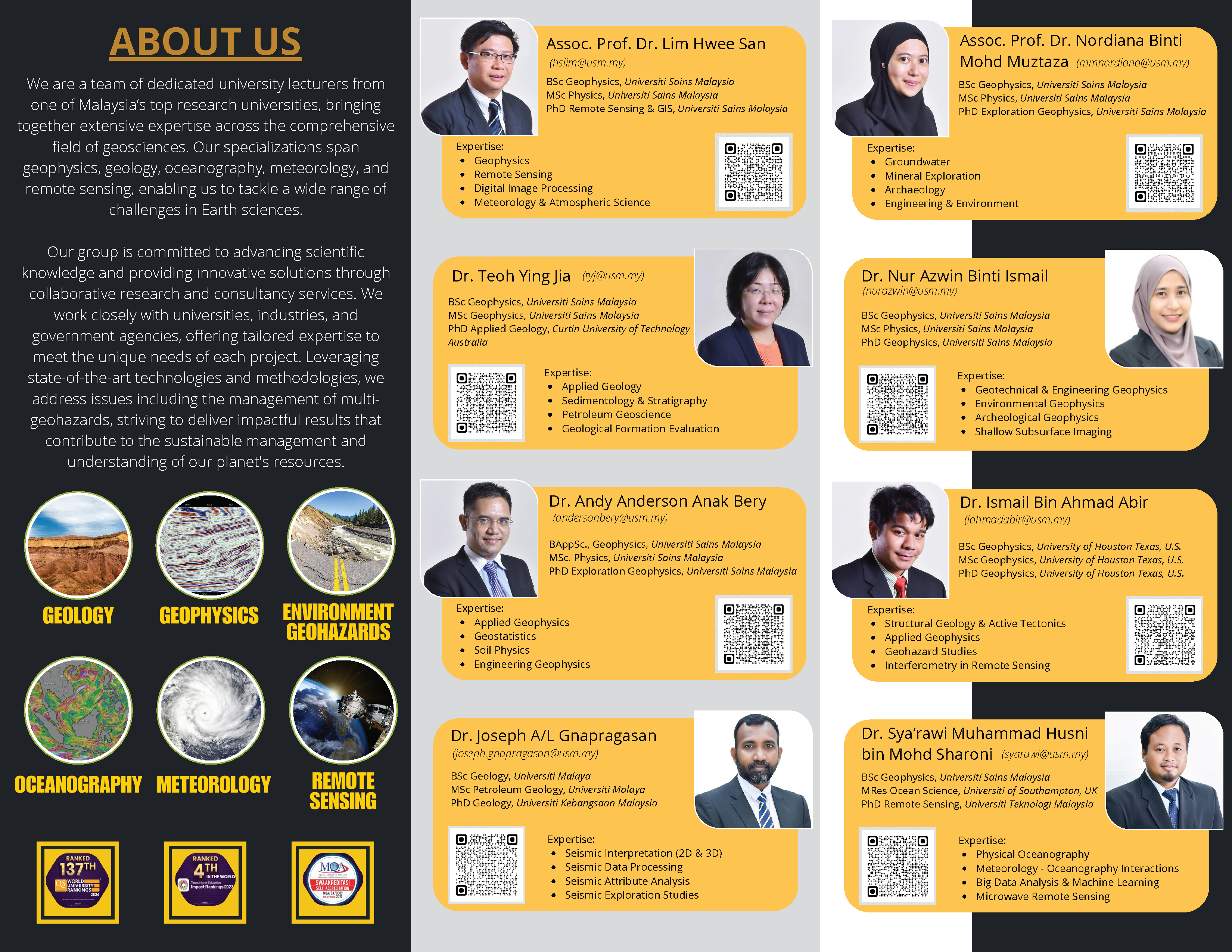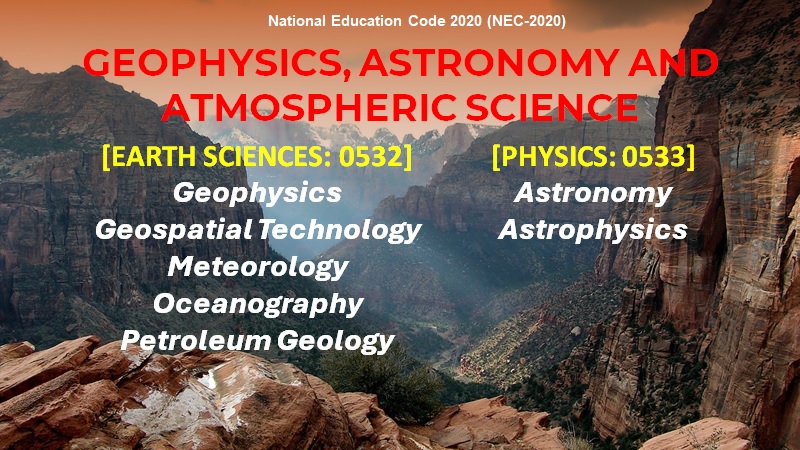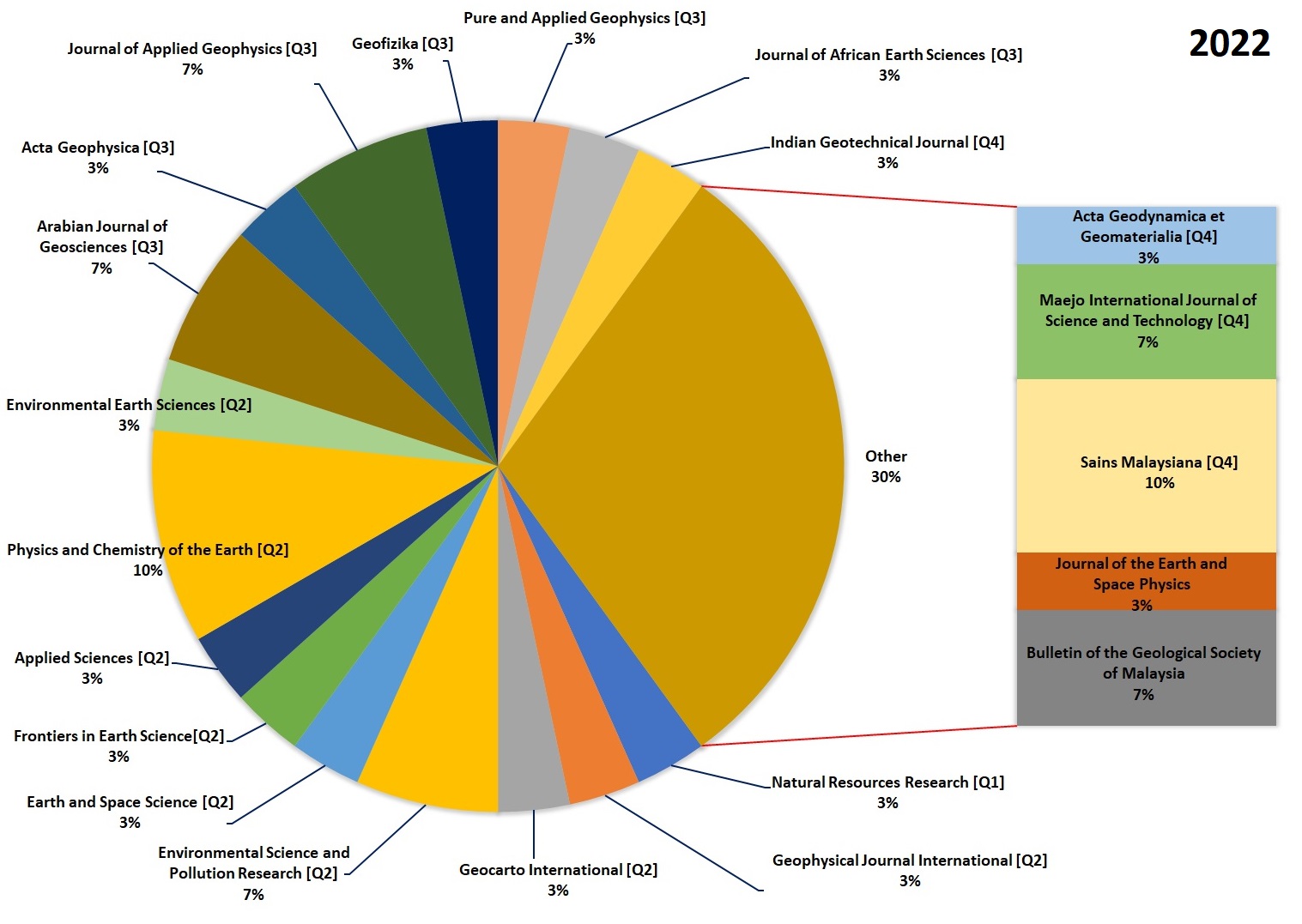GEOPHYSICS, ASTRONOMY AND ATMOSPHERIC SCIENCE




The Group's philosophy and objective has been to pursue excellence by concentrating its research initiatives in specific areas of the Geosciences. Graduate students benefit from greater focus and also enjoy close interaction with faculty members. A distinctive aspect of graduate study in the Geosciences Department is the opportunity for collaborative research, often involving several faculty members. Graduate studies, either Ph.D. and M.S. thesis-based programs, are offered with concentrations in areas including environmental and engineering geophysics, remote sensing applications, nearshore and coastal oceanography, petroleum geoscience and reservoir sedimentology, and meteorology.
The Geophysics Group occupies a modern, well-equipped building that houses experimental and analytical labs, faculty and graduate student offices, numerous computers and workstations. The group also owns a complete range of geophysical tools such as multielectrode resistivity and electromagnetic tools, ground penetrating radar and magnetic measurements meters.
Areas of Emphasis in Graduate Study and Research:
Engineering and Environmental Geophysics
Research within this sub-discipline involves the applications and utilization of the science of geophysics to environmental and engineering problems. Students will be exposed to the use of various specialized geophysical tools to solve subsurface problems. The group has extensive experience in applications of geophysical measurements to environmental and engineering problems. Examples include the investigation of industrial, military and abandoned waste disposal sites or on landfills, building sites and traffic routes, as well as mapping ground water pollution.
The USM Geophysics Group owns a complete range of geophysical tools such as multielectrode resistivity and electromagnetic, ground penetrating radar and magnetic measurements.
Remote Sensing Applications
Remote sensing research at the USM Geophysics Group focuses on the theory, concepts, and techniques of science and engineering as applied to sensing the earth, oceans, atmosphere, and space; and the processing, interpretation, and dissemination of this information. Projects undertaken are of multi-disciplinary collaborative research, often involving several faculty members. Examples include the use of satellite images in mapping estuarine coastal plume pattern, coastline changes and coastal reclamation, haze and air pollution studies.
Petroleum Geoscience: Sedimentary Geology and Reservoir Characteristic
Research projects in sedimentary and reservoir geology focuses on the integration of petrophysical parameters with field geophysical, sedimentological, and stratigraphic studies.Sedimentologicalfacies and stratigraphic characteristics obtained from field studies provide information concerning the depositional processes and paleoenvironment of sedimentary bodies, their relative age, geometry and probable lateral extent, which yield insight to broader issues of relative sea level change, structural geological history and basin evolution. Shallow geophysical studies of Quaternary successions (coastal and deltaic) generate images of recent sedimentary successions, revealing their geometry and (sequence) stratigraphic organizations. Integrating petrophysical data (porosity, permeability, density and rock velocity) into these larger scale stratigraphic frameworks allow us to visualize fluid behaviour and movements within different types reservoir sedimentary bodies, and determine the different factors that control the flow. The group main focus is the tertiary reservoir and non-reservoir succession in Sabah and Sarawak, East Malaysia. Analytical facilities include scanning electron microprobe (SEM), optical petrography, X-ray diffraction facilities, and a variety of other facilities at the School of Physics.
Nearshore and Coastal Oceanography
Knowledge of processes and patterns in the oceans is fundamental to understanding how the marine environment interacts with the rest of the planet. This knowledge can only be gathered through long term oceanographic research. We rely on ocean research to manage living and non-living marine resources in a sustainable and effective way, ensure national security without compromising ecosystem protections, and minimize the human impacts of natural hazards ranging from hurricanes and tsunamis to coastal erosion and global climate change.
One key focus of the oceanographic research team is estuary. Estuaries are key environmental and economic resources, supporting tourism, recreation, fishing, and shipping industries. For the last ten years, the group has been collecting data on the three major estuaries in Seberang Perai and Kedah, which lies on the northern west coast of Peninsular Malaysia.
Meteorological and Atmospheric Sciences
The objective of this group is to advance the science of meteorology with particular emphasis on the Malaysian and the Southeast Asian region, and to advance the national interest through meteorological and oceanographic research.
Kumpulan Penyelidikan Geofizik, Astronomi & Sains Atmosfera. Universiti Sains Malaysia (USM)

- Merupakan satu kumpulan penyelidikan di bawah Pusat Pengajian Sains Fizik, USM
- Terdiri daripada sekumpulan pensyarah yang menjalankan kajian berkaitan Geofizik, Astronomi dan Sains Atmosfera.
- Diketuai oleh Dr. Nur Azwin Ismail.
Penyelidik:
- Dr. Nur Azwin Ismail
- Dr. John Soo Yue Han
- Dr. Idahwati Sarudin
- Dr. Wan Mohamad Husni Wan Mokhtar
Skop Kajian Astronomi
- Astronomi Falak
- Cuaca Angkasa
- Ionosfera Bumi
- Graviti Kuantum
- Teori Medan Kuantum
- Kosmologi
- Angin Neutral Atmosfera
- Pengkomputeran Fizik
Perkhidmatan dan Aktiviti
- Pameran Planetarium
- Konsultasi Astronomi
- Peluncuran Roket Air
- Pertandingan Berkaitan Astronomi
- Pencerapan Matahari
- Pencerapan Malam
- Pengenalan Teleskop dan Tutorial
- Penyelidikan dan Pameran Astronomi (UPIFSA)
For more information, please contact:
Group leader
Dr. Teoh Ying Jia
E-mail:
Research Group Member:
Assoc. Prof. Dr. Lim Hwee San
Assoc. Prof. Dr. Wong Chow Jeng
Assoc. Prof. Dr. Nordiana Mohd Muztaza
Assoc. Prof. Dr. Andy Anderson Bery
Dr. Norhaslinda Mohamed Tahrin
Dr. Nur Azwin Ismail
Dr. Ismail Ahmad Abir
Dr. John Sue Yue Han
Dr. Sya'rawi Muhammad Husni Mohd Sharoni
Dr. Idahwati Sarudin
Dr. Joseph Gnapragasan
- Hits: 20982

